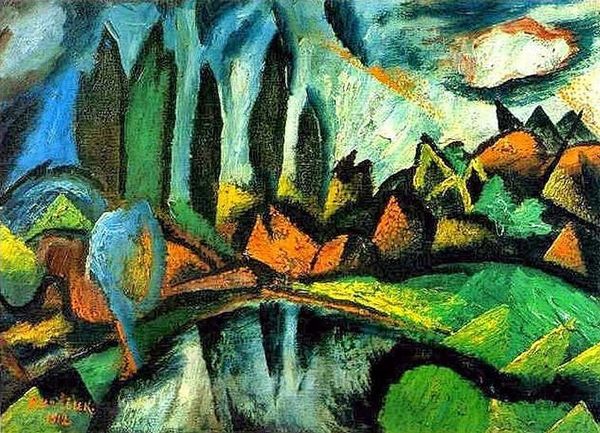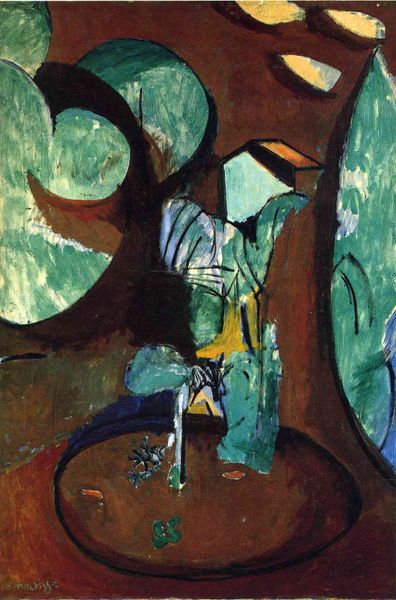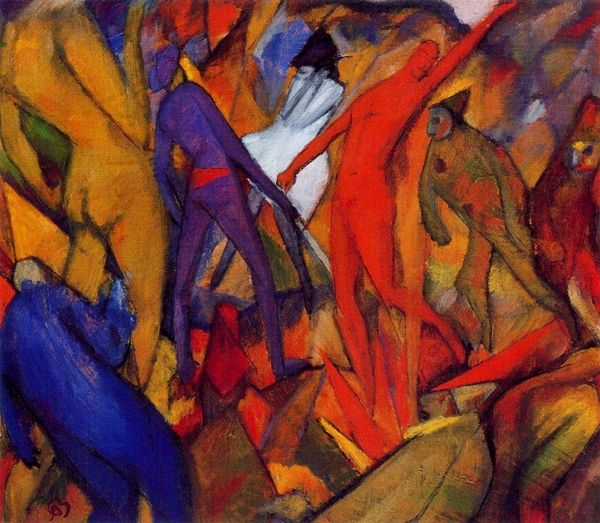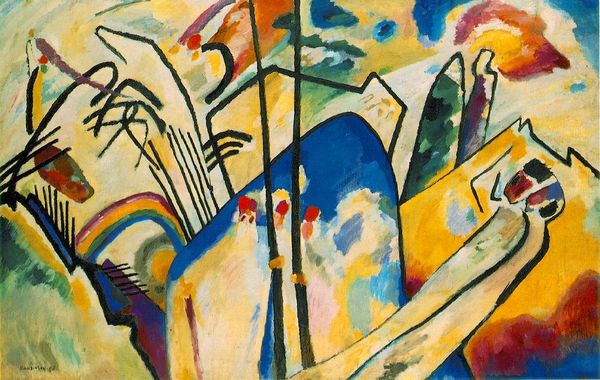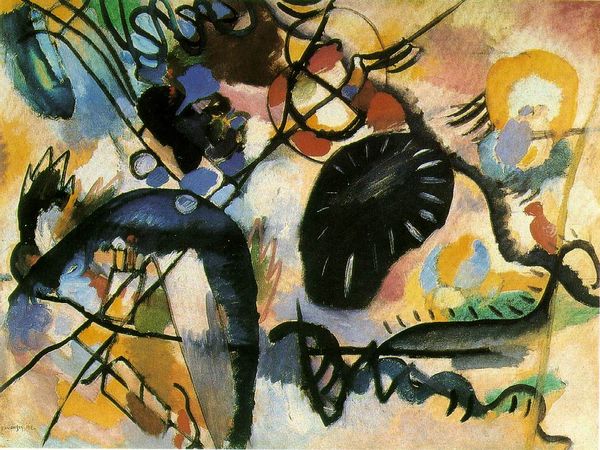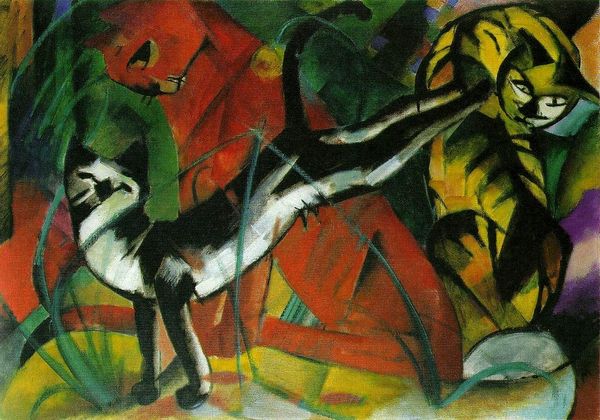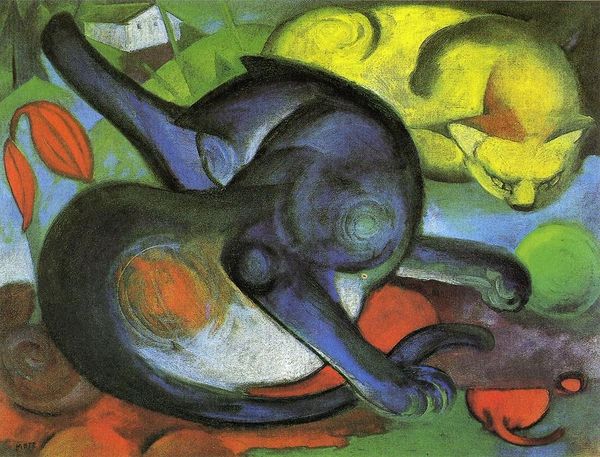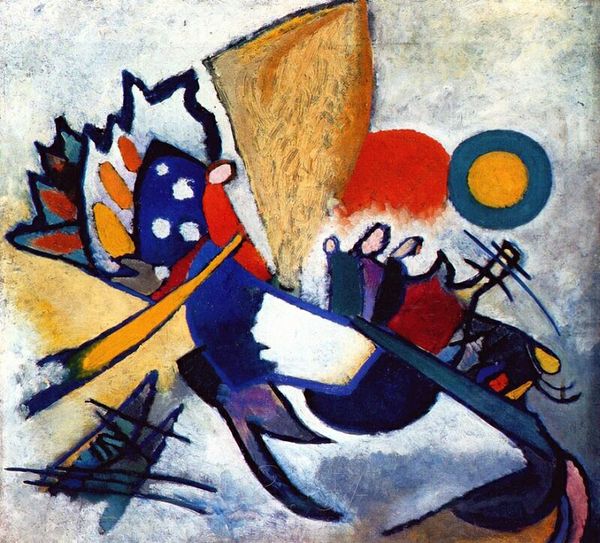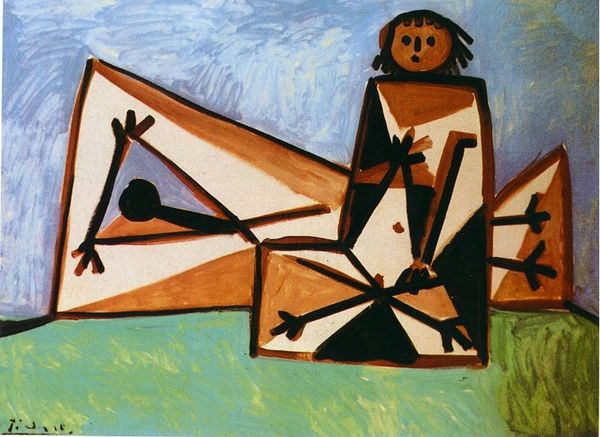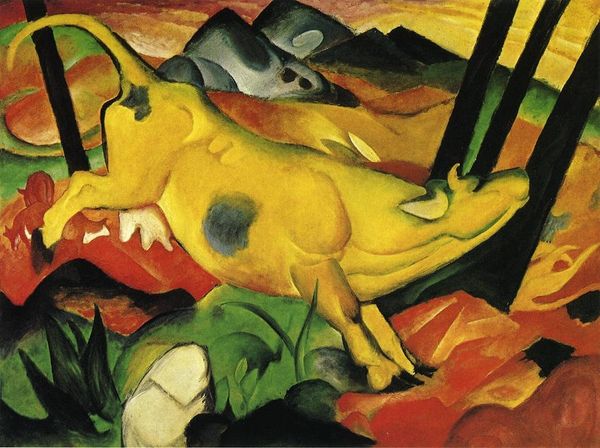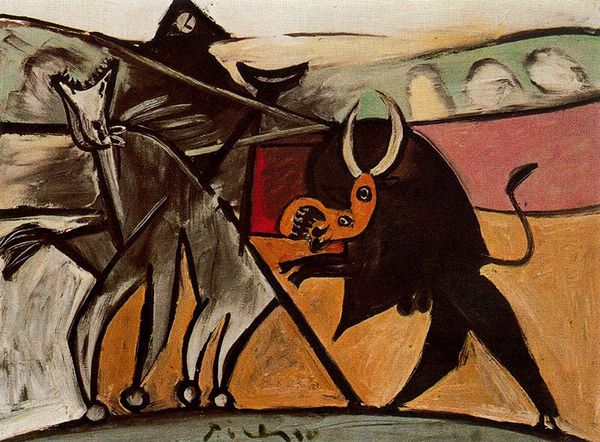
painting, oil-paint
#
cubism
#
animal
#
painting
#
oil-paint
#
expressionism
#
horse
#
paint stroke
Copyright: Public domain US
Curator: We’re looking at David Burliuk's "A Horse-Lightning" from 1907. He's really throwing us into a world where cubism and expressionism collide, isn’t he? What do you make of it? Editor: A fractured beast running through… what? An abstract field of industrial production? It’s strangely bleak, almost post-apocalyptic. It looks more like a steel sculpture than a living thing, actually. Curator: Precisely! The very feel of the oil-paint emphasizes that—thick, almost like construction adhesive binding together a story not easily told. Notice how the landscapes seems like afterthoughts. Editor: Right. It makes you consider what kind of labor goes into it. You can practically smell the fumes rising from this canvas! But seriously, thinking about labor… you said 1907? So, just before the Futurist manifestos? It is all about a transition from pasturage to a field dominated by human design. Curator: Definitely a transitional vibe. He’s tearing apart the traditional image of the horse, reimagining it in this fragmented, almost violent way. Burliuk wasn’t just painting horses. He's invoking a sense of progress, or rather the relentless surge towards something new, no matter the cost. He feels to me the way Nijinsky dances. Editor: The color scheme helps to capture it. The blues, oranges, yellows—not really 'natural' colors for the scene itself, are they? There are bold interventions into representation to signal we have moved past traditional subjecthood of romantic painting! And the impasto is laid so thick; you can really trace the gesture of his brushstrokes. Raw materiality is the message itself, more than anything depicted. Curator: Exactly! And this approach isn't solely visual. He provokes something within us, an unease mirroring the societal shift toward industry. Look how the shapes crash into each other: The very substance embodies emotional truth and it’s all swirling at us. He does what Picasso did when, apparently jealous of his radical style, they both came together in Paris and changed their views forever. Editor: But unlike Picasso’s turn, there's something rougher here, though. Less about aesthetics and more about a… almost ugly kind of truth. It makes me consider the role the worker has. Are we at a stable or on an assembly line? What labor birthed Burliuk’s "A Horse-Lightning" and who consumed it? Curator: I agree—this piece asks so many pertinent questions while inviting our rawest emotional responses. Editor: It has made me look at paintings with different eyes. Thank you.
Comments
No comments
Be the first to comment and join the conversation on the ultimate creative platform.
